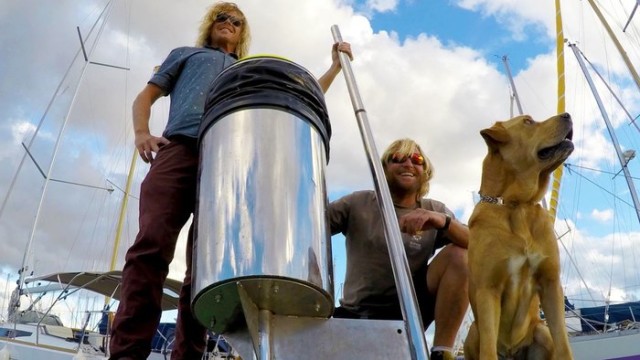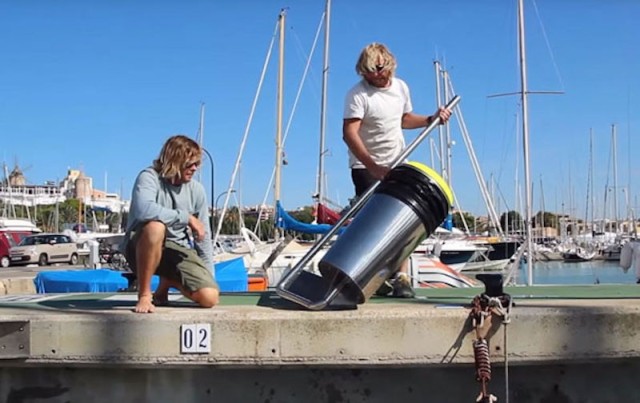Two expat Australian surfers hailing from Spain have banked on an ingeniously cool new invention to help sustain the aquatic life.
Let’s get to know about it.
GREAT MINDS BEHIND THE INVENTION
Fed up of the ugly picture of harbours and marinas choked with staggering plastic waste, detergents, and all other trash, Andrew Turton and Pete Ceglinski designed the first Seabin prototype in Perth, Australia.
It has a remarkable simple design that can suck up the surrounding debris and even filter water of all the oil contaminants.
HOW DOES IT WORK?
1. It is like a bucket whose rim floats at water level, allowing seawater laden with plastic, oils and all other debris to spill into it.

2. The Seabin is then connected to a water pump, at the bottom, which allows the device to suck in water 24 hours a day. Floating debris is filtered from the water by a catch bag made of natural fibres.
3. The water is then made to pass through an oil-water-separator that cleanses it of the fuel and detergent continually pumped into the marina by its resident boats, yachts and ships.
4. As for cleaning, the process is as simple as emptying the natural fibre trash bag that hangs inside.
5. While the catch bag is being cleaned and its contents responsibly disposed of, another is fitted to the Seabin in its place.
6. The Seabin is not detrimental to sea life. If a fish or marine animal makes its way into the bin then it will be caught by the natural fibre catch bag which is submerged in water and then simply thrown back into the water when the catch bag is changed by the marina worker.
ADVANTAGES
1. The catch bag needs to be cleaned once a day, providing an ancillary employment opportunity to the people in those regions where the Seabins are deployed.
2. Each Seabin has the capacity to filter up to 1.5kg of rubbish each day, which amounts to half a tonne of rubbish collected over a year.
3. Seabins will not be mass produced in China to obtain at a cheaper price. Instead, in an attempt to encourage the local economy they will be produced on a variety of continents.
4. The Seabins will initially be electrically powered but will soon switch to solar and wind power depending on its location. They are affordable, need low maintenance and work 24×7.
5. Admirably, Turton and Ceglinski plan to recycle the plastics collected from one Seabin into a new Seabin, that may cumulatively offer a new lease of life to the oceans.
ONE MARINA AT A TIME
This small ambitious step towards ridding the harbours and ports of the life menacing debris has created a drive worldwide.
It is a revolutionary invention that can provide a breather to the seas and oceans as well as to human settlement in the vicinity, providing them a healthier life. With the garbage patches multiplying around the world, staking the lives of millions of sea creatures, the ramifications can be as far reaching as climate change. Being installed at marinas, ports, yacht clubs, the major culprits of pollution, Seabins will tackle the problem at the source.
Over 230,000 people have viewed their fundraising video online, and thousands of donations have been made to support the Seabin Project and help it enter the market in 2016.
With the multitude of oceans and seas and continual littering, the Seabin Project is not a comprehensive solution but a mammoth first step in this direction that might, at least, postpone the impending disaster.
Image Credits: Google



































